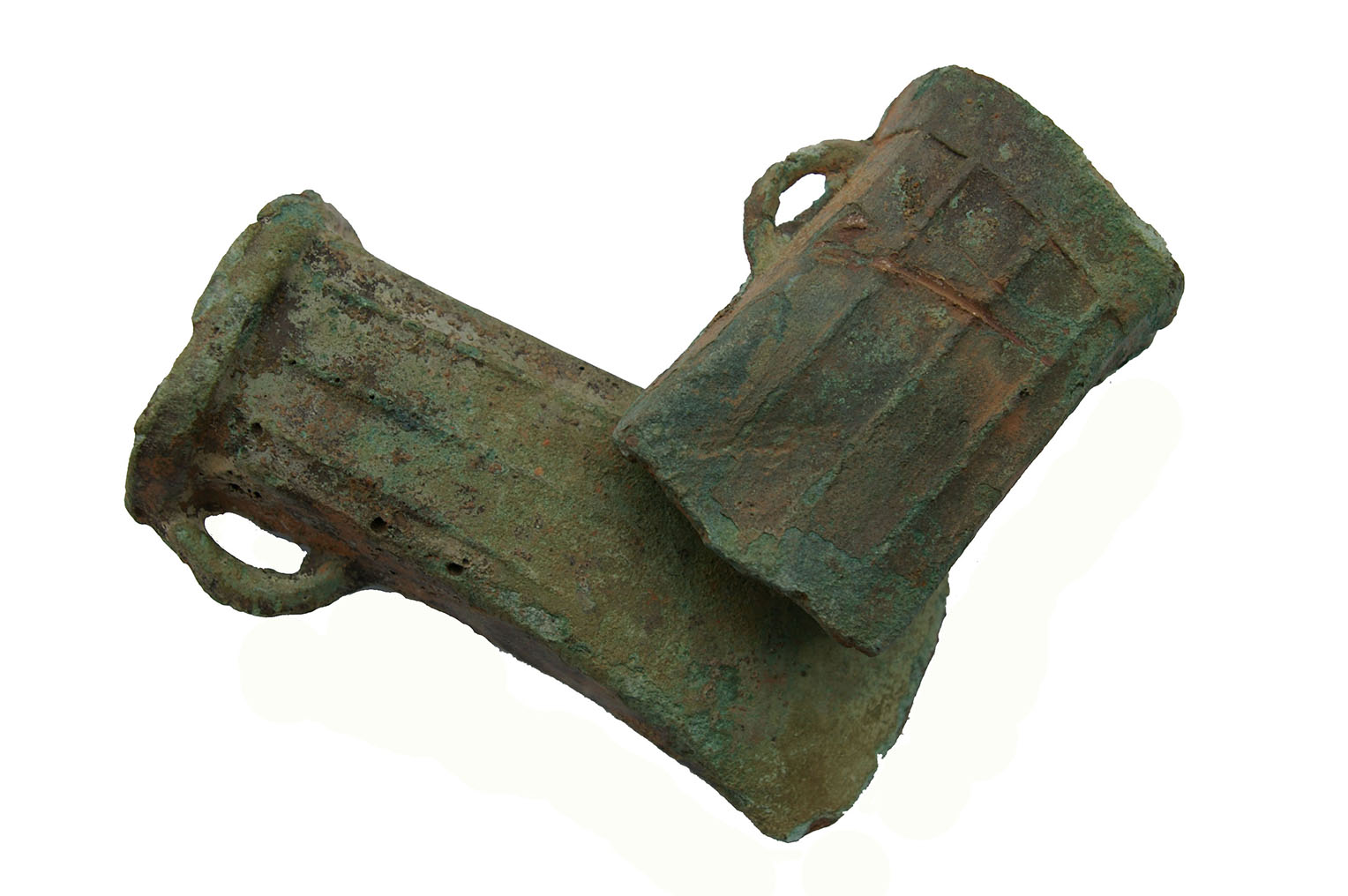The earliest phase of the bronze age in western Europe is the Beaker culture, which began in the late neolithic and continued into the early bronze age. There are occupation sites for this period at Pencoyd and Hereford city, but none have been found near Hentland.
A characteristic Late Bronze Age artifact is the bronze socketed axe of the type found at Ditton Farm at Winter's Cross (see image).
Bronze age flint arrowheads have been found at Kynaston in Hentland parish.
The classic Bronze Age funerary monument is the round barrow. Although no standing barrows survive in the immediate area, several ring-ditches exist nearby. After a barrow has been flattened (usually for agricultural purposes) the circular ditch which surrounded it, and from which the earth was excavated to build it, remains. These are often visible as circular crop-marks, 'ring-ditches', in aerial photographs.
